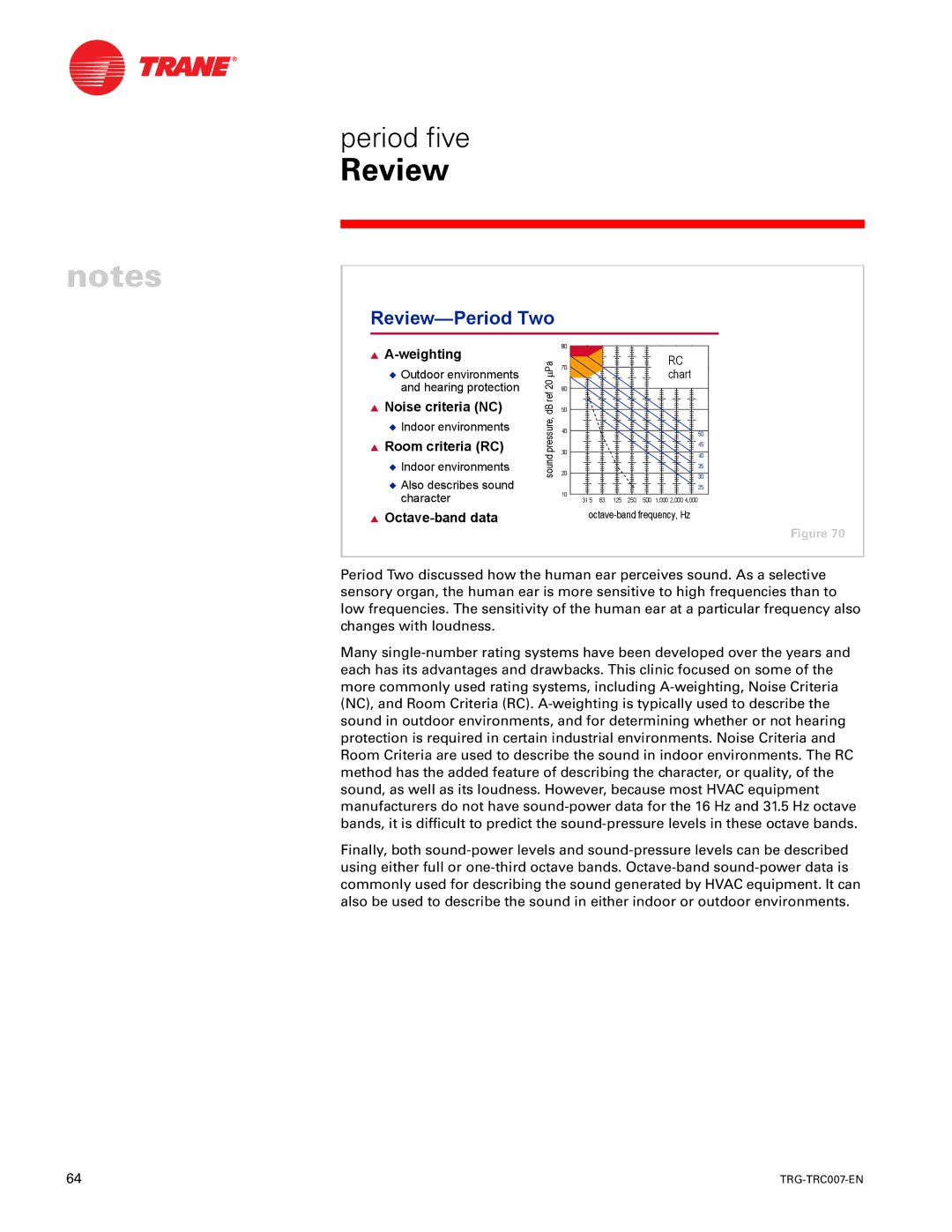
period five
Review
notes
Review—Period Two
I A-weighting | | 80 | | | | | | | |
mPa | | | | | | | RC |
70 | | | | | | |
| | | | | |
K Outdoor environments | | | | | | | chart |
| | | | | | |
and hearing protection | 20 | 60 | | | | | | | |
| | | | | | |
dB ref | | | | | | | |
I Noise criteria (NC) | 50 | | | | | | | |
I Room criteria (RC) | pressure, | 30 | | | | | | | |
K Indoor environments | | 40 | | | | | | | 50 |
| | | | | | | | |
| | | | | | | | | 45 |
K Indoor environments | sound | 20 | | | | | | | 40 |
| | | | | | 35 |
| | | | | | | | |
K Also describes sound | | | | | | | | | 30 |
| | | | | | | | 25 |
character | | 10 | | 63 | 125 | 250 | 500 | 1,000 2,000 4,000 |
| 31.5 |
I Octave-band data | | | octave-band frequency, Hz |
Figure 70
Period Two discussed how the human ear perceives sound. As a selective sensory organ, the human ear is more sensitive to high frequencies than to low frequencies. The sensitivity of the human ear at a particular frequency also changes with loudness.
Many single-number rating systems have been developed over the years and each has its advantages and drawbacks. This clinic focused on some of the more commonly used rating systems, including A-weighting, Noise Criteria (NC), and Room Criteria (RC). A-weighting is typically used to describe the sound in outdoor environments, and for determining whether or not hearing protection is required in certain industrial environments. Noise Criteria and Room Criteria are used to describe the sound in indoor environments. The RC method has the added feature of describing the character, or quality, of the sound, as well as its loudness. However, because most HVAC equipment manufacturers do not have sound-power data for the 16 Hz and 31.5 Hz octave bands, it is difficult to predict the sound-pressure levels in these octave bands.
Finally, both sound-power levels and sound-pressure levels can be described using either full or one-third octave bands. Octave-band sound-power data is commonly used for describing the sound generated by HVAC equipment. It can also be used to describe the sound in either indoor or outdoor environments.

